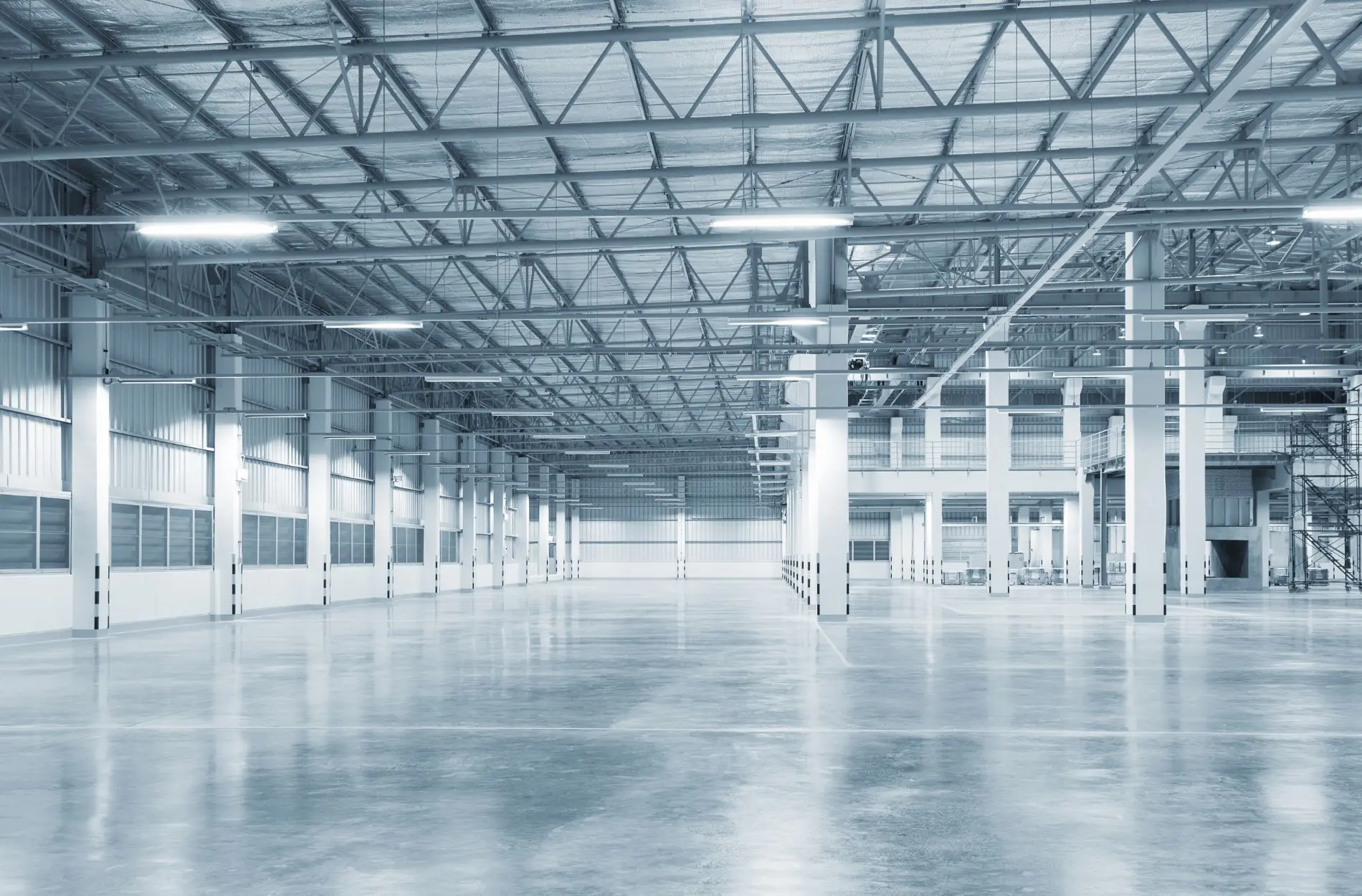Temperature Control in Industrial Paint Applications

Industrial painting projects involve more than just the right color and finish. One of the most overlooked but important parts of the process is temperature control. Temperature doesn’t just affect how paint dries. It also changes how it sticks, how long it lasts, and how well it performs under tough conditions. When working on larger facilities like warehouses, production plants, or factories, even small temperature shifts can cause delays, wasted materials, and coating failures that lead to extra work.
In places like Williamson County, Tennessee, where heat and humidity peak in August and stick around longer than you’d hope, having a plan for temperature and climate control is key. This article focuses on how temperature control affects industrial painting results and outlines some practical strategies for getting better, longer-lasting outcomes. We also look at what painting contractors need to know here in Williamson and Davidson Counties to do the job right.
Understanding Temperature Control in Industrial Painting
Temperature may seem like a simple factor, but it controls much of what happens once paint hits a surface. When it gets too cold, paint thickens and won’t spread evenly. When it’s too hot, paint can dry too fast on the surface before it cures beneath. This can cause bubbling, cracking, and chalking. All of that shortens the life of the finish and increases maintenance down the road.
The type of paint matters too. Different coatings need different temperature ranges to cure as intended. Here’s a quick overview.
- Water-based paints: best applied between 50°F and 85°F
- Oil-based paints: usually need temperatures between 40°F and 90°F
- Epoxy coatings: work best when temps are between 60°F and 85°F
During August in Williamson County, daytime highs push well into the 90s. In these conditions, early morning or late afternoon becomes the best time for work. Surfaces like metal siding can heat up faster than the surrounding air, making mid-day painting especially risky. Humidity also plays a part, slowing drying and causing coating issues.
A recent example came from a job on a distribution center with a metal exterior in Franklin. Because temperatures weren’t checked closely, primer was applied during the hottest part of the day. The heat caused the top layer to dry too fast while the bottom stayed soft. Within a week, the finish began peeling. A little temperature planning could have avoided the extra cost of redoing the work.
In conditions like those seen in Williamson County late each summer, using the right tools to measure and adjust surface and air temps before painting starts makes a big difference to the final results.
Techniques for Managing Temperature During Painting
Staying on top of temperature while painting means using some practical steps before and during the job. Whether the work is indoors or out, managing the environment ensures better results, especially during hotter months.
1. Use painters’ thermometers
These tools let you check the actual temperature of a surface. That’s more useful than just relying on the air temperature. Real-time readings help teams decide when to apply primer or finish so things cure properly.
2. Adjust painting schedules
When temperatures are high, crews should stick to early morning or evening hours. This avoids heat spikes during mid-day, especially on metal, concrete, or floors directly exposed to sunlight. Surfaces can get much hotter than the air around them.
3. Improve ventilation or cooling indoors
Without HVAC systems, large indoor areas like hangars or production zones can overheat. Portable fans, cross-ventilation setups, or temporary air units help keep temps in that ideal range while work is ongoing.
4. Use shade and protective setups outdoors
For exterior projects, tarps and temporary barriers help keep surface temperatures lower. These prevent blistering during curing while also shielding the coating during those first few critical hours.
5. Match products with the climate
Not all industrial paints handle higher or lower temperatures equally. Choosing the right one for your target conditions cuts down on curing problems and later touch-ups.
Given Williamson County’s mix of heat and humidity in late summer, these strategies help contractors stay on schedule and avoid callbacks. Planning around the forecast and avoiding peak heat times gives crews a better shot at getting the job right the first time.
Benefits of Proper Temperature Control
Taking control of temperature brings more than just fewer mistakes. When paint is applied in the right conditions, the finished surface looks better and lasts longer. That goes for both visual quality and performance under stress like machinery use or exposure to weather and chemicals.
One of the biggest wins comes in paint adhesion. When a product has time to cure slowly and evenly, the bond it creates is stronger. That means fewer signs of wear and tear later on. This holds true whether it’s equipment coatings, warehouse flooring, or structural steel.
Temperature planning also affects long-term spending. Fixes caused by early peeling or cracking cost more than planning ahead. If a loading dock in Davidson County needs a repaint because the summer heat wasn’t accounted for, it means more downtime, labor, and materials. It’s much smarter to solve the problem at the start.
One project stands out from a site in South Nashville, where large warehouse floors needed epoxy coatings in multiple areas. The job was scheduled over five early mornings in smaller sections. Floor fans kept airflow consistent and shading near openings helped cool things down. The slightly longer schedule paid off with clean, even layers that still show minimal wear under forklift and foot traffic. That kind of result comes from working with the environment, not against it.
Choosing the Right Industrial Painting Contractors Company
Picking the right painting partner can solve many temperature-related concerns before a brush even touches a surface. Industrial building owners in Williamson County should choose contractors that know the area’s weather patterns and can explain how they manage high heat, humidity, and shifting forecasts.
Here are a few key questions to ask when comparing companies.
- What’s your plan for working in high temperatures or humidity?
- Do you use surface thermometers or other monitoring tools on job sites?
- How do you adjust work schedules to avoid extreme conditions?
- Can you share any local projects completed during summer months?
- Do you have experience selecting and applying coatings based on climate and surface type?
Contractors who follow one set method without adjusting to location or season may skip some important steps. On large-scale jobs, that leads to early coating failures, rework, or delays that set everyone back. Local experience matters just as much as technical skills.
It helps to ask how these companies deal with surprise weather changes too. Afternoon storms or random heat spikes aren’t uncommon in Middle Tennessee. Being able to pivot when needed, without losing quality, shows true professionalism.
Keeping Your Industrial Painting Project on Track
To get the best results from an industrial painting job, staying ahead of temperature issues is just as important as using high-quality materials or experienced crews. Work done in the wrong conditions can look fine at first but fail much faster than expected. For industries that rely on clean, low-maintenance facilities, that leads to extra cost and downtime.
Temperature swings, high humidity, and intense sunlight are part of daily life during August in both Williamson and Davidson Counties. A strong plan that considers local weather helps keep jobs on schedule. Whether it’s scheduling work at cooler times, monitoring conditions, or picking more forgiving coatings, small details shape the big picture.
Every building has unique challenges, from sun-exposed walls to vaulted ceilings that trap heat. Being aware of those differences and acting on them from the start gives contractors and property managers far more control over the results. If you’re planning to repaint an industrial site, from manufacturing zones to warehouse floors, paying attention to temperature isn’t just smart. It makes all the difference between doing it once and doing it twice.
Planning to paint or refinish large facilities in Williamson County? Set your project up for long-term success by partnering with a trusted industrial painting contractors company that understands the local climate and application needs. Count on PaintPro to get the job done right with results built to last.





